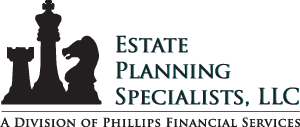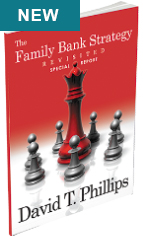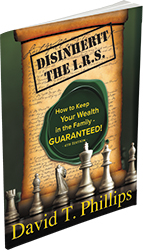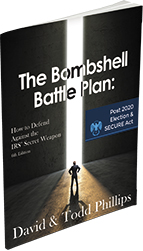
Winning the War on Stretch IRAs

"Call 888-892-1102 to order the new Required Minimum Distribution Leverage Strategy Special Report for $10.00,
which includes a personalized illustration kit!"
Preserving IRA wealth for children and other younger beneficiaries is a goal of many people. That’s because a large percentage of their wealth is in IRAs and other qualified retirement plans. Two forces, however, stand in opposition to that goal and need to be defeated.
One force is the required minimum distributions (RMDs). After age 70½, annual distributions must be taken from most IRAs and other qualified retirement plans. These are designed to steadily deplete an IRA during the owner’s lifetime, and the percentage of the IRA that must be distributed each year increases. See our March 2015 visit for details about RMDs.
RMDs are the bane of the plans of many IRA owners. RMDs force the distribution of money the owners don’t need and increase income taxes on IRA owners.
Another force is increasing political opposition to the Stretch IRA. RMDs were created to limit an IRA owner’s ability to pass that wealth to the next generation. Yet, the ability to establish a Stretch IRA that lasts several generations always has been available, as we discussed in our February 2016 visit. Some policymakers want to end the Stretch IRA.
President Obama and others have proposed eliminating the Stretch IRA, for both traditional IRAs and Roth IRAs. They want IRAs to be fully distributed within no more than five years of an owner’s death. Such a change would increase tax revenue for the government and reduce the perceived inequality of some people inheriting large IRAs from their parents or others. Such a change would defeat the strategies discussed in our February visit. Late in 2015 we saw Congress remove some key planning strategies for claiming Social Security benefits. The strategies were eliminated almost overnight and without public discussion. The same thing could happen to Stretch IRAs at any time. You can’t rely on the Stretch IRA being available to your children and grandchildren.
Fortunately, there are steps you can take now to overcome these two forces. You will preserve the value of your IRA, and you’ll be able to increase the after-tax wealth available to your loved ones. Let’s take a look at some of those strategies.
These strategies are primarily for people who have adequate resources outside their IRAs to fund retirement. They view IRAs primarily as something to be left to loved ones and as funds to be tapped in an emergency.
The Family Dynasty Trust. One strategy is to accept that you’ll have to take RMDs but use them to multiply wealth. In other words, leverage your RMDs into more after-tax wealth. Here’s how you can do it.
Suppose Max and Rosie Profits are married and each is 71. Max has $1,000,000 in his IRA. Their other resources are adequate to fund their expected retirement. Max’s first RMD will be $36,496, and after income taxes he’ll have $27,372. The Profits create an irrevocable trust with their grandchildren as beneficiaries and give their after-tax RMD to the trust each year. This gift is tax-free, because of the annual gift tax exemption that allow the Profits each to give up to $14,000 each year on behalf of each of the grandchildren.
The trust acquires a joint and survivor life insurance policy on the lives of Max and Rosie. They are in good health, so the RMDs are sufficient to buy a policy with a face value of more than $1.5 million. After both the Profits pass away, the insurance policy pays $1.5 million to the trust. This is tax free. Depending on the trust terms Max and Rosie established upfront, the trust either distributes the money tax free to the grandchildren in a lump sum or keeps the money, invests it, and distributes it over time.
This is far more after-tax money than would have been available to the grandchildren if Max named them as beneficiaries of the IRA and during the rest of his life simply took the RMDs and invested or spent the after-tax amounts. Remember, IRA beneficiaries pay taxes on distributions just as the original owner would have, so the grandchildren would inherit only the after-tax value of the IRA. Any future limits on Stretch IRAs also are avoided, since the grandchildren directly benefit from the trust and its $1.5 million tax free life insurance policy, not the IRA.
The Family Bank. The Family Bank strategy is a twist on the Family Dynasty Trust. Instead of creating a trust to own the insurance policy, you own the policy.
In this strategy, Max and Rosie Profits take out and own a joint and survivor life insurance policy and pay the premiums with the RMDs. They’ll own a slightly different type of policy than in the Family Dynasty Trust strategy. The policy will have a lower insurance benefit, but it also has a substantial cash value account. The life insurance benefit will be about $1.4 million.
A portion of the premiums will be allocated to the cash value account, and it will earn interest each year. Max and Rosie will be able to borrow from the cash value account tax free after it has accumulated for a few years. There will be zero or low interest, and loans can be taken for any purpose. The loans will be available to them if they have an unexpected need for cash or if they want to provide financial help for their grandchildren before the policy pays out the life insurance benefits. They can either repay the loans or allow the outstanding loans to reduce the life insurance proceeds.
The earnings on the cash value account can be tied to the “upside only” performance of a stock index like the S&P 500, Dow, or Nasdaq or based on the fixed income account of the insurer. If, for example, the cash value account earns 5.92% annualized, after 10 years it will be worth $301,439. After 20 years the value will be $795,439.
After both Max and Rosie pass away, the policy beneficiaries inherit the policy’s death benefit, minus any outstanding loans, tax free.
The Family Dynasty Trust and Family Bank strategies are very flexible. You can adjust them to fit your changing goals and circumstances. You also don’t have to wait until age 70½ to take advantage of them. You can establish an early exit strategy by taking IRA distributions before you are required to.
The strategies also can be used when you have a Roth IRA, though you aren’t worried about RMDs. You can take Roth IRA distributions tax free. By using Roth IRA distributions to fund either of these strategies you are locking in a guaranteed, tax-free amount that eventually will be inherited by your loved ones. So no matter how your investments perform, no matter how much you spend, no matter how long you live, your financial legacy will most likely be greater than what your Roth IRA could ever grow to. If you pass away in the early years, your return on investment is enormous.
You can learn more details about these two strategies in the book by my life insurance expert David T. Phillips, The IRA Required Minimum Distribution Leverage Strategy. It’s available to my readers for $10 by calling 888-892-1102.
Charitable Remainder Trusts. For those who are charitably inclined, and even for some who aren’t, the charitable remainder trust (CRT) is another strategy to consider. There are a couple of ways to use CRTs.
“The negative markets that have prevailed so far in 2016 are what make this a good time to consider converting a traditional IRA to a Roth.”
In a CRT strategy, you create a trust that will pay income to a beneficiary for life. The income can be either a fixed amount (a charitable remainder annuity trust, or CRAT) or a percentage of the current year’s trust assets (a charitable remainder unitrust, or CRUT). After all the beneficiaries pass away, the assets that remain in the trust go to a charity or charities you named when creating the trust.
One strategy is to draw down your traditional IRA now and transfer the funds to the CRT. You’ll have to include the IRA distribution in gross income, but you’ll receive a charitable contribution deduction for the present value of the remainder amount the charity is estimated eventually to receive. Of course, the deduction won’t be the full amount of the distribution. The older you are, the higher the percentage of the distribution the deduction will be.
The trust invests the money and makes the annual distributions to you for the rest of your life. You also can name your children or grandchildren as income beneficiaries either now or after you. They’ll receive annual income and won’t be able to tap into the trust to spend faster the way they could with an IRA. After they pass away, the charity receives the remainder. IRS regulations limit the income that can be paid to you and other beneficiaries by requiring that the estimated present value of the amount the charity will receive be a minimum percentage of the trust’s original value.
The trust doesn’t pay income taxes, because it is a charitable trust, so that increases the amount invested and distributed. You pay income taxes on the distributions, but some of the distributions might be of capital gains or qualified dividends, reducing your tax burden. The strategy provides a steady stream of lifetime income that probably is at least equal after taxes to what you would have received from the IRA and might be higher. You’ll have to work with an estate planner to generate specific estimates and scenarios.
Another strategy is to name the CRT as IRA beneficiary. You write the trust now, and name your children or grandchildren as its beneficiaries. You’ll continue to take RMDs from the IRA during your lifetime. After you pass away, the trust receives what’s left in the IRA, and your estate has a charitable contribution deduction.
The CRT invests the money and pay income to the trust beneficiaries for their lives or a period of years, whichever you designated. After that, the charity receives the remainder amount. Any changes to the Stretch IRA rules won’t apply. Your beneficiaries also won’t be able to deplete the trust early. Instead, they’ll receive a steady stream of income for years.
These strategies are in addition to the old standbys of converting the traditional IRA to a Roth IRA or simply emptying your IRA early, which we discussed in many past visits.




